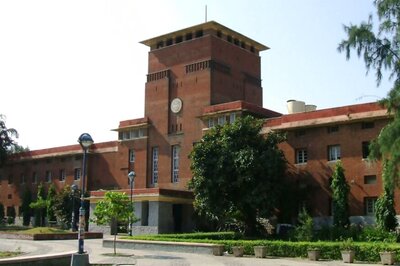
views
Sanatan culture is the oldest living civilisation in the world. Zoroastrians, Jews, Christians, Muslims and various other cultures and religions came from outside and Bharat assimilated all of them in its vastness.
Whenever two cultures or civilizations confront each other there are possibilities of clashes. Parsis and Jews assimilated in this land and made it their own without much chaos. The assimilation of Islam and Christianity was quite troublesome, because of their evangelical nature and their non-belief in the shared history of this land.
Islam, particularly, came at the behest of the sword and Islamic invaders injured the Indian civilisation gravely by destroying its educational institutions like Nalanda and Takshila, breaking thousands of its temples and by imposing taxes to convert people to their faith.
In spite of all the animosity, the hosts assimilated and co-existed with the hostile alien religion.
Time passed and Muslims and other minorities of this land got every opportunity to develop themselves in whatever field they wished – be it politics, Bollywood, business, journalism, sports, judiciary or bureaucracy.
A large section of the minorities realised the vast history and accommodative nature of this land and its people and made the land their own. But there are a selected few who took pride in rulers likes the Mughal emperors Babar and Aurangzeb.
This warring section gave birth to the dispute of ‘Ram Janmabhoomi’. Around 500 years ago, Babar’s commanders destroyed the temple in Ayodhya and built a mosque. For the Islamic invaders, religious supremacy was a part of their territorial aggressions.
Even without the temple, Lord Ram’s glory found no bounds in Bharat. From the Maryada Puroshotam Ram’s example in every household as that of an idle man, to the idea of Ram Rajya by Mahatama Gandhi or the salutation of Imame-a-Hind by Allama Iqbal, Lord Ram has remained the hero for everyone.
Corporate houses, schools, colleges, government offices and courts — everywhere Dussehra and Diwali are celebrated based on the Hindu historical text.
Online shopping giants and offline retail giants earned millions on the Dussehra-Diwali sales every year.
In spite of all of this, there was a court case which went on for more than 70 years after Independence to prove the mere existence of the Lord and to fix the location of his birth place. Till that time, the hero of a thousand-year-old civilisation had to take shelter in a tent.
While the city of Tirupati where the famed Venkateswara Temple is located has a yearly economy of Rs 4,000 crore, the region around Vaishno Devi makes about Rs 500 crore annually and Prayag Kumbh generates an economy of over Rs 1 lakh crore.
However, this 70-year delay in the verdict has deprived the people of Ayodhya and eastern UP from generating revenue.
On Saturday, a 500-year-old wrong was set right. The whole nation of 130 crore citizens entrusted their faith in five people – a chief justice-led constitutional bench of five judges.
With a week to go for his retirement, CJI Ranjan Gogoi read the judgment of a case that has seen many benches, many CJIs, many appeals, countless lawyers, numerous TV debates and historical, archeological and religious evidences, running into thousands of pages.
Finally the court gave back the land to Lord Ram.
(The author is a political analyst and TEDx speaker. Views expressed are personal)



















Comments
0 comment